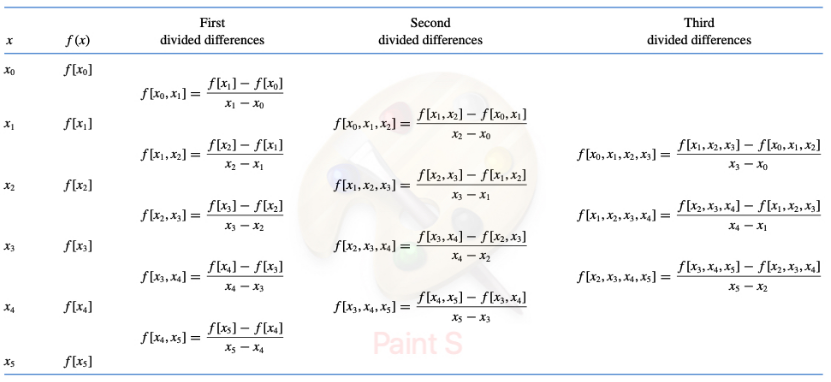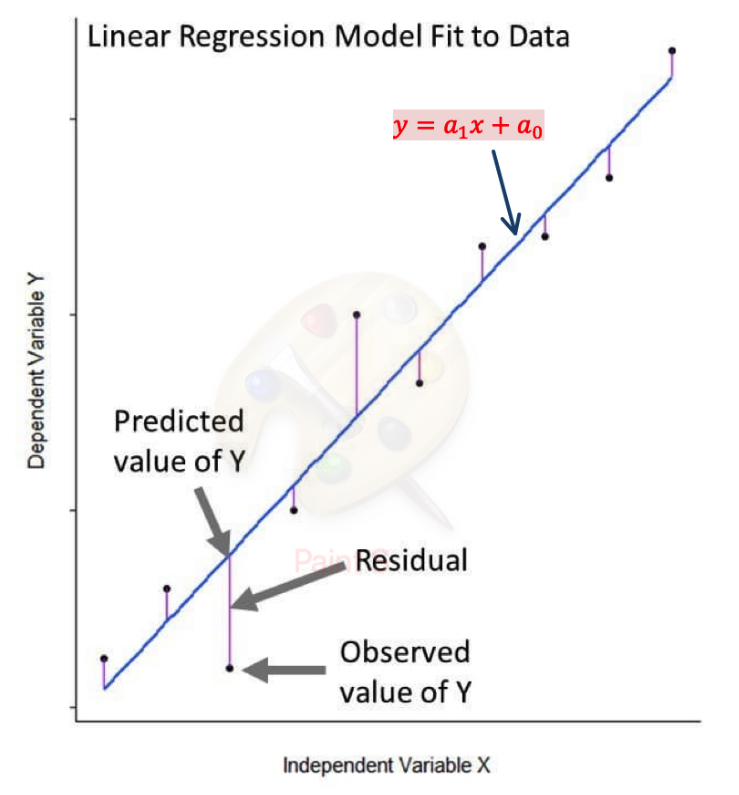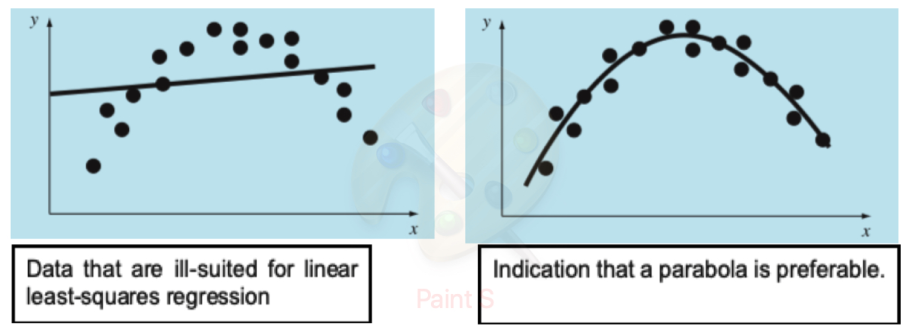Interpolation
What is Interpolation?
Interpolation is a method of estimating unknown data points that lie between known data points. Think of it as “connecting the dots” with a mathematical function.
Key Points:
- Constructs new data points based on a discrete set of known data points
- Creates a function that passes through ALL given data points exactly
- Used to estimate values between the given data points
Important Theorem
Weierstrass Approximation Theorem: For any continuous function on a closed interval, there exists a polynomial that can approximate it as closely as desired.
Key Result: For

Newton’s Divided-Difference Method
The Newton Form
For
Finding the Coefficients
Step 1: Set
Step 2: Set
Step 3: Set
Divided Difference Notation
Zeroth divided difference:
First divided difference:
Second divided difference:
General

Newton’s Divided Difference Formula
The coefficients are:
Final Newton Form:
4.1.2 Lagrange Interpolating Polynomials
The Lagrange Form
The same interpolating polynomial can be written as:
where the Lagrange basis polynomials are:
Examples of Lagrange Polynomials
For
For
Example: Current in Wire
Given data:
| t | 0 | 0.1250 | 0.2500 | 0.3750 | 0.5000 |
|---|---|---|---|---|---|
| i | 0 | 6.24 | 7.75 | 4.85 | 0.0000 |
Problem: Find
Errors in Interpolating Polynomials
Error Formula
For a function
where
Error Estimation
Theoretical error:
Practical error estimation (using additional data point):
Least Squares Approximation
When to Use Least Squares
Unlike interpolation (which passes through all points exactly), least squares finds the “best fit” curve that minimizes the overall error when:
- Data contains measurement errors
- We want a simpler model than exact interpolation
- We have more data points than we want polynomial degree
The Least Squares Principle
Residual (error):
Objective: Minimize the sum of squared errors:

Linear Regression
The Linear Model
Find the best line:
Sum of squared errors:
Finding the Coefficients
To minimize
This gives us the normal equations:
Example: River Flow Prediction
Given data:
| Precipitation (cm) | 88.9 | 108.5 | 104.1 | 139.7 | 127.0 | 94.0 | 116.8 | 99.1 |
|---|---|---|---|---|---|---|---|---|
| Flow (m³/s) | 14.6 | 16.7 | 15.3 | 23.2 | 19.5 | 16.1 | 18.1 | 16.6 |
Problem: Predict annual water flow for 120 cm precipitation.
Polynomial Regression
When Linear Isn’t Enough
Sometimes data follows a curved pattern that a straight line can’t capture well.

The Polynomial Model
Fit a polynomial of degree
General Method
Minimize:
Normal equations: For
This creates a system of
Example: Population Growth
Given data:
| t (years) | 0 | 5 | 10 | 15 | 20 |
|---|---|---|---|---|---|
| p (population) | 100 | 200 | 450 | 950 | 2000 |
Problem: Use 3rd-order polynomial regression to predict population at
Summary
Key Differences
| Method | Purpose | Passes Through Points? | Best For |
|---|---|---|---|
| Interpolation | Exact fit | Yes, all points | Clean data, need exact values |
| Least Squares | Best approximation | No, minimizes error | Noisy data, want simple model |
When to Use Each Method
Use Interpolation when:
- Data is precise and error-free
- You need exact values at given points
- You want to estimate between known points
Use Least Squares when:
- Data contains measurement errors
- You want a simpler model than exact interpolation
- You have more data points than desired polynomial degree
- You want to predict trends and patterns